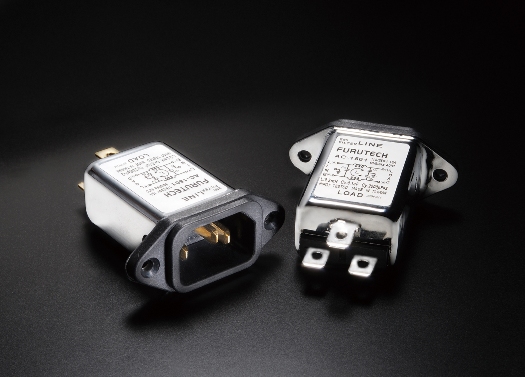
 |
|
|||||||
| Shunyata Research Designing Silent Systems for recording, film and music |
 |
|
|
Thread Tools | Display Modes |
|
#1
|
|||
|
|||
|
Caelin.... I have 2 x Talos & 2 x Cyclops which I really like & enjoy. I'm considering adding inline power filters between the conditioners & the components. I would even consider between the wall & the conditioner too.
The product under consideration (Furutech Flux 50) incorporates a Furutech AC-1501R EMI-filtering IEC connector. This 15amp IEC filter is increasingly being used by vendors in the construction of their products. I'm sure you know it. (Image below) I have been eyeing off the Furutech product for some time, even before I purchased your Shunyata Hydras. My interest has been reinvigorated after coming to a conclusion that the recent installation of a Smart Meter has impacted on the quality (cleanliness) of the power. Secondly, there have been good reviews & experiences regarding the Furutech inline EM filters. Have you experimented with placement of inline power filters? Would you consider there to be any additional perceivable benefits when used in conjunction with your products? Could they have a limiting effect? I get that in some respects, Furutech are a competitor, but in the real world, some of us mix & match. Also, If I recall, you have used or do use some Furutech component parts in some of your products.  Thanks 
Last edited by MyPal; 07-17-2013 at 12:51 PM. |
|
#2
|
||||
|
||||
|
Quote:
We do not use any Furutech products or technology in our products. I have a great deal of respect for Furutech and the products that they produce. I believe that they set the standard in aesthetics for connectors. I was not familiar with the products but went to their website to look it up. From the description, these appear to be conventionally designed T or pi filters. However, I am quite sure that they are using superior quality caps and coils within the unit. Input AC filters are commonly used by component manufacturers to inhibit line noise and transient spikes. They are generally beneficial when used within a component or used inline per component. Now - there is no free lunch. When you introduce a filter inline there is a corresponding reduction of DTCD (instantaneous current). It is simple physics. You cannot introduce a series coil and then say that there is NO decrease in instantaneous current delivery. It is the very nature of a coil to impede or resist a change in current flow. The only question would be to relevance and if the reduction translates a change in perceived performance. If I believed that an AC input filter was beneficial to our power conditioner, I would have custom designed and built it into each unit. Every coil and capacitor has a correponding resonant behavior. When you cascade these type of devices the result can be unpredictable. In other words, filters are reactive and interact with one another. If you have a power conditioning device with filters and an electronic component with an AC filter input and then add a third filter between them the result is highly conditional. We prefer to design our products with the least amount of variable reactance with audiophile grade components to ensure a consistently positive perfomance across a broad spectrum of equipment. So the answer to your question is - you have to try it in your own system on each component. Just because it is positive on one component does not guarantee good results on another. The other variable is the level of actual noise on your specific power line. It you have a high amount of noise on the line then it will be more likely to have a positive result. With the inevitable reduction of DTCD, the components most likely to have a negative result will be those that pull high amounts of current - like an amplifier or a power conditioner. But as I said it is unfortunately very conditional and dependent upon equipment design and the power line environment. Hope that helps. cg
__________________
Caelin Gabriel President Shunyata Research |
|
#3
|
|||
|
|||
|
Thanks Caelin. Your explanation puts it into better perspective. I may give them a try with source components which feed off the Talos & steer clear of power amps that feed off the Cyclops.
|
 |
|
|
| Audio Aficionado Sponsors | |